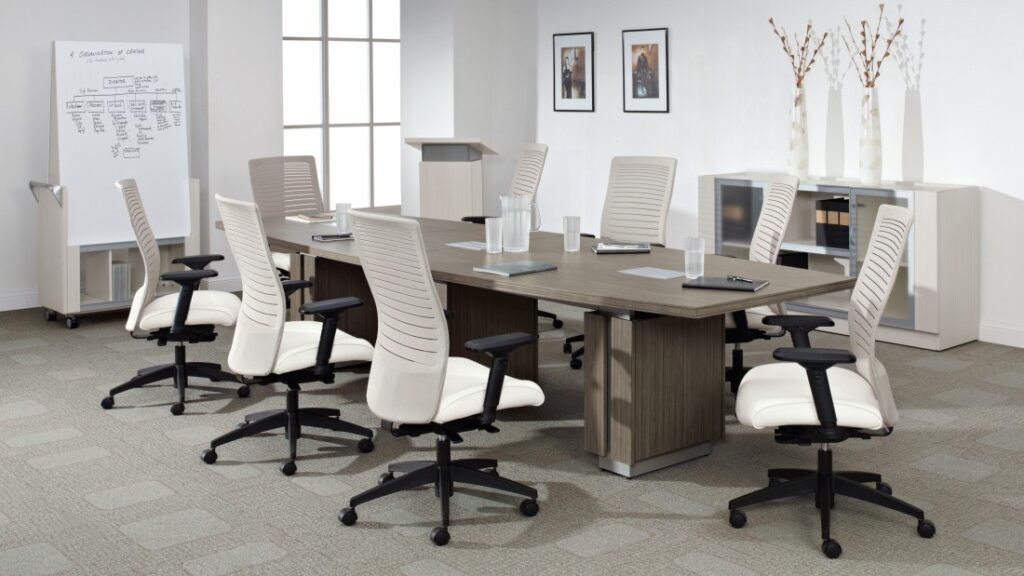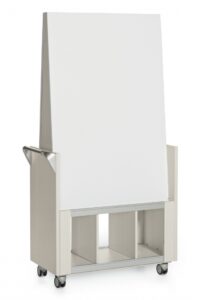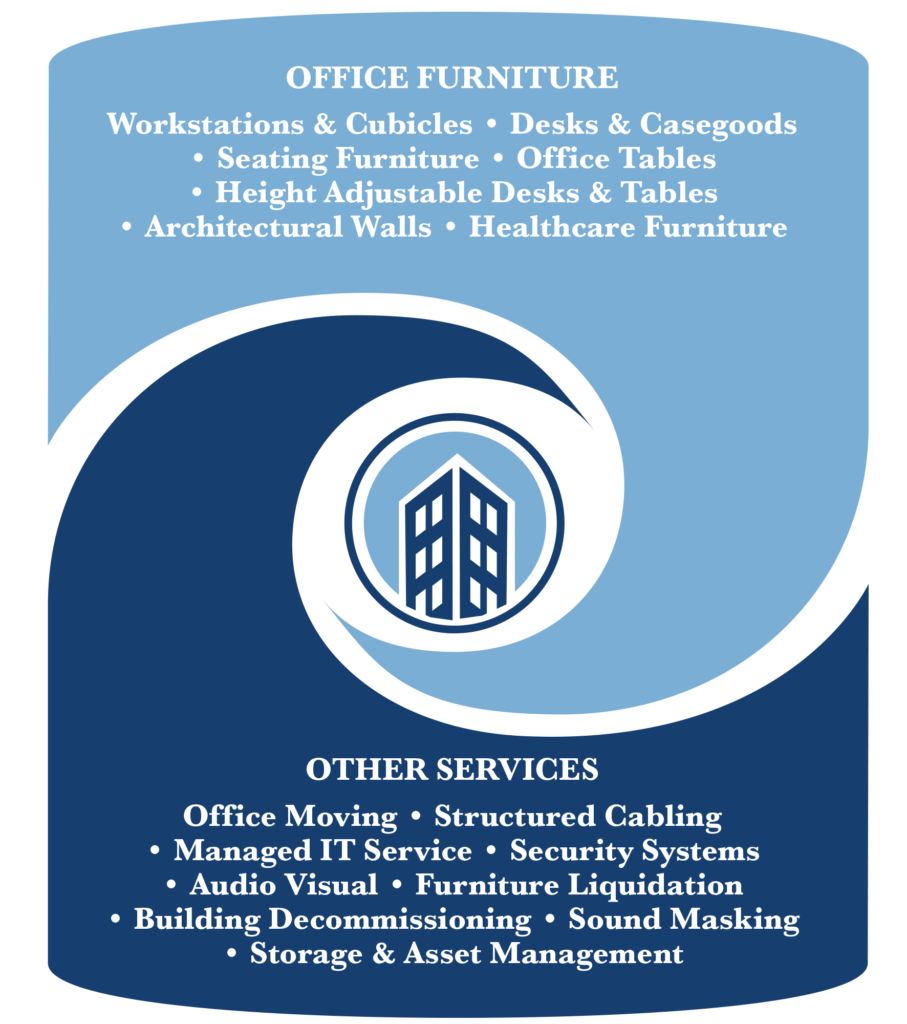24 Apr Smart Meeting Room Requirements and Expectations
In today’s fast-paced business environment, smart meeting rooms have become an essential asset for companies looking to enhance productivity and collaboration. These technology-driven spaces are designed to streamline communication, foster creativity, and facilitate efficient decision-making. The integration of advanced tools and systems in a smart meeting room can significantly improve the way teams interact and collaborate.
Adopting smart meeting room technology is no longer a luxury but a necessity. As businesses expand globally and remote work becomes more prevalent, the demand for seamless and effective communication tools has grown exponentially. A smart meeting room bridges the gap between physical and virtual teams, providing a cohesive platform for all participants to engage and contribute.
Understanding the components and benefits of a smart meeting room is crucial for organizations aiming to stay competitive. From state-of-the-art audio-visual equipment to intuitive interfaces, these rooms are designed to meet the diverse needs of modern workplaces. This article will explore the essential features of smart meeting rooms, highlighting their role in enhancing collaboration and productivity.

Imagery Sources: Global Furniture Group
Key Features of a Smart Meeting Room
 A smart meeting room is equipped with an array of features that facilitate seamless communication and collaboration. Some of the key elements include high-quality audio and visual equipment, intuitive control systems, and robust connectivity options. These components work together to create an environment conducive to effective meetings and presentations.
A smart meeting room is equipped with an array of features that facilitate seamless communication and collaboration. Some of the key elements include high-quality audio and visual equipment, intuitive control systems, and robust connectivity options. These components work together to create an environment conducive to effective meetings and presentations.
- Audio and Visual Equipment: High-definition screens and advanced sound systems are fundamental to a smart meeting room. They ensure that all participants can see and hear clearly, whether they are in the room or joining remotely. This clarity is vital for presentations, video conferences, and collaborative discussions.
- User-Friendly Interfaces: The control systems in smart meeting rooms are designed to be intuitive, allowing users to operate the technology with minimal training. Touchscreens, voice controls, and wireless connectivity simplify the process of setting up and managing meetings, enabling users to focus on content rather than technical issues.
- Connectivity and Compatibility: A smart meeting room must support various devices and platforms to accommodate the diverse tools used by different teams. This includes seamless integration with laptops, tablets, smartphones, and video conferencing software, ensuring that all participants can connect effortlessly.
These features are not just about adding gadgets to a room; they are about creating an environment where technology enhances the meeting experience. By investing in these key components, organizations can ensure that their meeting spaces are efficient, effective, and adaptable to future technological advancements.
Importance of Enhanced Collaboration
Enhanced collaboration is at the heart of a smart meeting room’s value proposition. In an era where teamwork and innovation drive success, fostering an environment that encourages collaborative efforts is paramount. Smart meeting rooms facilitate this by providing tools that allow teams to work together more effectively, regardless of their physical location.
 Collaboration in a smart meeting room is not limited to sharing ideas; it extends to the ability to co-create and innovate. With features like real-time document editing, interactive whiteboards, and instant communication channels, team members can collaborate on projects more dynamically. This leads to faster decision-making and a more agile response to challenges and opportunities.
Collaboration in a smart meeting room is not limited to sharing ideas; it extends to the ability to co-create and innovate. With features like real-time document editing, interactive whiteboards, and instant communication channels, team members can collaborate on projects more dynamically. This leads to faster decision-making and a more agile response to challenges and opportunities.
Moreover, enhanced collaboration has a direct impact on employee engagement and satisfaction. When team members feel their contributions are valued and that they have the tools to perform their best work, motivation and morale improve. This positive work environment can lead to increased productivity and a stronger organizational culture, ultimately contributing to the company’s success.
Technology Integration in Smart Meeting Rooms
The integration of technology in smart meeting rooms goes beyond basic equipment; it involves a strategic approach to selecting and implementing systems that enhance the overall meeting experience. This integration ensures that all technological components work seamlessly together, providing a cohesive and efficient environment for collaboration.
- Centralized Control Systems: A centralized system allows users to manage all aspects of the meeting room technology from a single interface. This includes controlling lighting, audio, visual displays, and even room scheduling. This streamlined approach reduces the complexity of managing multiple devices and systems.
- Cloud-Based Solutions: Utilizing cloud technology in smart meeting rooms enhances accessibility and flexibility. Cloud-based platforms enable real-time collaboration on documents and projects, providing a consistent and reliable experience for both in-office and remote participants.
- Automation and Artificial Intelligence: Incorporating AI-driven tools can significantly enhance the functionality of a smart meeting room. From automatic transcription of meetings to AI-powered scheduling assistants, these technologies simplify tasks and allow team members to focus on strategic discussions.
By integrating these technologies, organizations can ensure that their smart meeting rooms are not only effective today but also adaptable to future innovations. This forward-thinking approach positions companies to remain competitive and responsive to the ever-evolving business landscape.
Audio and Visual Equipment for Optimal Performance
High-quality audio and visual equipment are cornerstone components of any smart meeting room. These tools ensure that communication is clear and effective, whether participants are in the room or joining remotely. Investing in top-tier audio-visual solutions can dramatically enhance the overall meeting experience.
Audio Equipment
- Microphones and Speakers: Crystal-clear sound is essential for effective communication. High-quality microphones and speakers reduce background noise and ensure that every participant can hear and be heard clearly. Consider options like beamforming microphones and surround sound speakers for optimal performance.
- Acoustic Treatments: The physical characteristics of the room can significantly impact audio quality. Acoustic panels and treatments can reduce echo and improve sound clarity, creating a more conducive environment for meetings.
Visual Equipment
- High-Definition Displays: Large, high-resolution screens ensure that visual content is clear and engaging. Whether it’s a presentation, video, or collaborative document, high-definition displays allow all participants to see details clearly.
- Projectors and Interactive Whiteboards: For larger meeting rooms, projectors or interactive whiteboards can be an effective way to share visual content. These tools allow for real-time interaction and collaboration, making meetings more dynamic and engaging.
Investing in high-quality audio and visual equipment is essential for creating a smart meeting room that supports effective communication and collaboration. These tools not only enhance the meeting experience but also ensure that meetings are productive and efficient.
User-Friendly Interfaces and Control Systems
 The success of a smart meeting room largely depends on the user-friendliness of its interfaces and control systems. An intuitive and accessible control system ensures that users can focus on the content of the meeting rather than struggling with technology. This section explores the key elements that contribute to a user-friendly smart meeting room.
The success of a smart meeting room largely depends on the user-friendliness of its interfaces and control systems. An intuitive and accessible control system ensures that users can focus on the content of the meeting rather than struggling with technology. This section explores the key elements that contribute to a user-friendly smart meeting room.
Control Systems
- Centralized Touch Panels: A centralized touch panel allows users to control all aspects of the meeting room technology from a single interface. This includes adjusting lighting, audio, visual displays, and even room scheduling.
- Voice-Activated Controls: Voice control technology can simplify the process of managing meeting room systems. By using voice commands, users can adjust settings, start or end meetings, and control other aspects of the room without needing to interact with physical interfaces.
Interfaces
- Wireless Connectivity: Providing wireless connectivity options is crucial for a seamless user experience. Users should be able to connect their devices to the meeting room’s systems without the hassle of cables and adapters.
- Responsive Design: The interface design should be responsive and adaptable to different devices and screen sizes. This ensures that users can easily navigate and control the meeting room systems, regardless of the device they are using.
By prioritizing user-friendly interfaces and control systems, organizations can create a smart meeting room environment that is accessible to all users, regardless of their technical proficiency. This approach not only enhances the meeting experience but also encourages greater participation and engagement.
Space Design and Layout Considerations
The design and layout of a smart meeting room play a crucial role in its effectiveness. A well-designed space not only accommodates the necessary technology but also creates an environment conducive to collaboration and productivity. This section explores the key considerations for designing a smart meeting room.
Layout and Seating
- Flexible Seating Arrangements: A flexible seating arrangement allows the room to be adapted to different meeting formats and team sizes. Consider options like modular furniture or movable chairs and tables that can be reconfigured as needed.
- Ergonomic Design: Ergonomic seating and furniture ensure that participants are comfortable during meetings. This can enhance focus and engagement, leading to more productive discussions.
Room Aesthetics
- Lighting: Adequate lighting is essential for creating a comfortable and visually appealing environment. Consider options like adjustable lighting or natural light sources to enhance the ambiance of the room.
- Decor and Acoustics: The decor and acoustic treatments of the room can impact the overall experience. Choose materials and colors that complement the technology and contribute to a professional and inviting atmosphere.
By considering these design and layout elements, organizations can create a smart meeting room that supports effective communication and collaboration. A well-designed space not only enhances the meeting experience but also reflects the company’s commitment to innovation and excellence.
Connectivity and Compatibility with Devices
In a smart meeting room, connectivity and compatibility with various devices are crucial for seamless collaboration. Ensuring that the meeting room systems can integrate with different devices and platforms allows participants to connect effortlessly and focus on the content of the meeting.
Device Compatibility
- Multi-Platform Support: The meeting room systems should support a wide range of devices, including laptops, tablets, and smartphones. This ensures that all participants can connect and contribute, regardless of the device they are using.
- Cross-Platform Integration: Seamless integration with different operating systems and software platforms is essential. This includes compatibility with popular video conferencing tools, document sharing platforms, and other collaboration software.
Connectivity Options
- Wireless Connectivity: Offering wireless connectivity options, such as Wi-Fi, Bluetooth, and NFC, allows participants to connect their devices to the meeting room systems without the hassle of cables.
- Universal Ports and Adapters: Providing universal ports and adapters ensures that participants can connect their devices to the meeting room systems, even if they do not support wireless connectivity.
By prioritizing connectivity and compatibility, organizations can create a smart meeting room environment that supports seamless collaboration and communication. This approach not only enhances the meeting experience but also ensures that all participants can engage and contribute effectively.
Security Features for Confidential Meetings
Security is a critical consideration for smart meeting rooms, especially when hosting confidential meetings. Ensuring that sensitive information is protected requires a comprehensive approach to security, encompassing both physical and digital measures.
Digital Security
- Encrypted Communication: Implementing encryption for all communication channels, including video conferencing and document sharing, ensures that sensitive information is protected from unauthorized access.
- Secure Access Controls: Utilizing secure access controls, such as multi-factor authentication and role-based permissions, ensures that only authorized users can access the meeting room systems and data.
Physical Security
- Access Control Systems: Installing access control systems, such as keycard or biometric entry, ensures that only authorized personnel can enter the meeting room.
- Surveillance and Monitoring: Utilizing surveillance and monitoring systems can enhance the physical security of the meeting room, deterring unauthorized access and providing a record of all activity in the room.
By implementing robust security measures, organizations can ensure that their smart meeting rooms provide a secure environment for confidential meetings. This approach not only protects sensitive information but also fosters trust and confidence among participants.
Future Trends in Smart Meeting Room Technology
As technology continues to evolve, smart meeting rooms are poised to become even more advanced and versatile. Keeping an eye on future trends in smart meeting room technology can help organizations stay ahead of the curve and ensure that their meeting spaces remain effective and relevant.
Emerging Technologies
- Virtual and Augmented Reality: The integration of virtual and augmented reality into smart meeting rooms can enhance collaboration by providing immersive experiences and interactive content.
- Artificial Intelligence and Machine Learning: AI and machine learning technologies can automate routine tasks, provide insights and analytics, and enhance the overall functionality of smart meeting rooms.
Sustainable Solutions
- Energy-Efficient Technologies: Incorporating energy-efficient technologies can reduce the environmental impact of smart meeting rooms and contribute to sustainability goals.
- Smart Building Integration: Integrating smart meeting rooms with smart building systems can enhance efficiency and provide a more cohesive experience for users.
By staying informed about these trends, organizations can ensure that their smart meeting rooms remain cutting-edge and continue to support effective collaboration and communication.
Conclusion: Transforming Collaboration in the Workspace
Smart meeting rooms represent a transformative approach to collaboration in the modern workplace. By integrating advanced technologies, user-friendly interfaces, and strategic design elements, these spaces enhance communication, foster innovation, and drive productivity.
Organizations that invest in smart meeting room technology can create an environment that supports effective teamwork and decision-making. By prioritizing the essential features outlined in this article, companies can ensure that their meeting spaces remain relevant and effective in the face of evolving business needs.
As you consider the implementation of a smart meeting room, remember that the goal is not just to add technology but to create a space that enhances the meeting experience for all participants. By doing so, you can transform collaboration in your workspace and position your organization for success in the future.
Ready to transform your meeting spaces? Contact us today to schedule a consultation and discover how we can help you create the smart meeting room space that not only meets but exceeds your employees’ expectations.
MyOffice has over 20 years of experience in supporting client’s implementing office solutions. We understand the needs of the modern office environment. Optimizing your workspace through furniture selection and layout is a core competency of ours. We are here to help!

